Magic mushrooms VS antidepressants
Inside the Centre for Psychedelic Research and the Psychedelic drug trial featured in tonight’s BBC documentary.
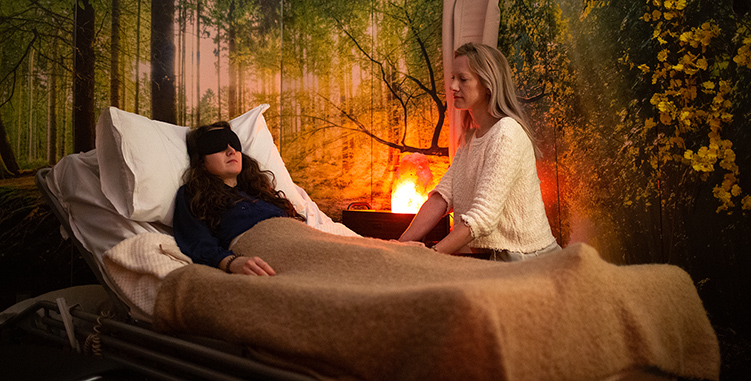 Image © Thomas Angus, Imperial College London
Image © Thomas Angus, Imperial College London
Dr Rosalind Watts, Clinical lead on the trial in the treatment room (right). Whilst inside the safety of a hospital treatment room, a space which is normally clinical and bright, the room has been fitted out to be an extremely relaxing and pleasant space to be in for the psychedelic sessions during the trial.
The clinical trial aimed to compare the effects of psilocybin, the active ingredient of magic mushrooms, with an antidepressant on a small group of participants with clinical depression. Read more about the trial here.
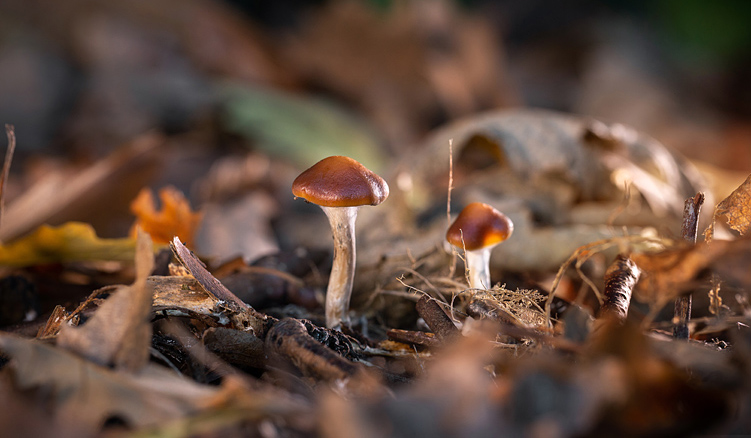 Image © Thomas Angus, Imperial College London
Image © Thomas Angus, Imperial College London
So called ‘magic mushrooms’ naturally grow freely all over the UK, the species I shot here for the press release are young ‘Psilcocybe Cyanescens’ (also known as ‘wavy caps’).
This was actually shot at dusk on a miserable dark day, I used two lights, the one from the rear with an orange coloured gel attached, to simulate a warm autumnal dusk light in the woodland where they were growing naturally.
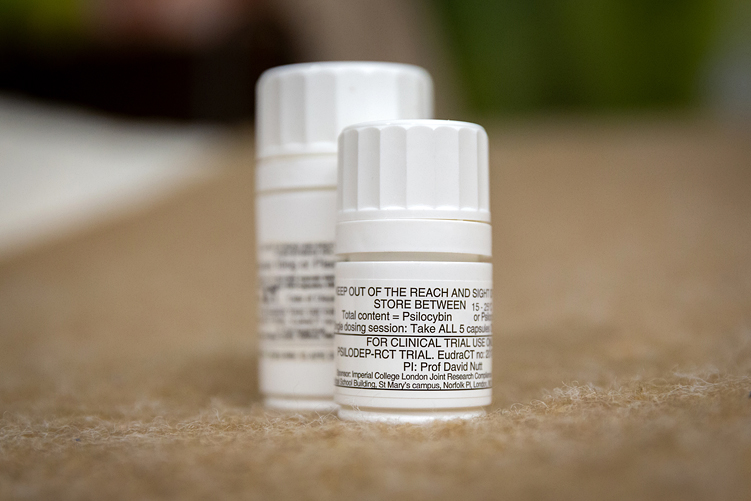 Image © Thomas Angus, Imperial College London
Image © Thomas Angus, Imperial College London
The patients on the trial don’t just chew down on a handful of mushrooms, the active ingredients are delivered in a very carefully measured pill form for consistent clinical results.
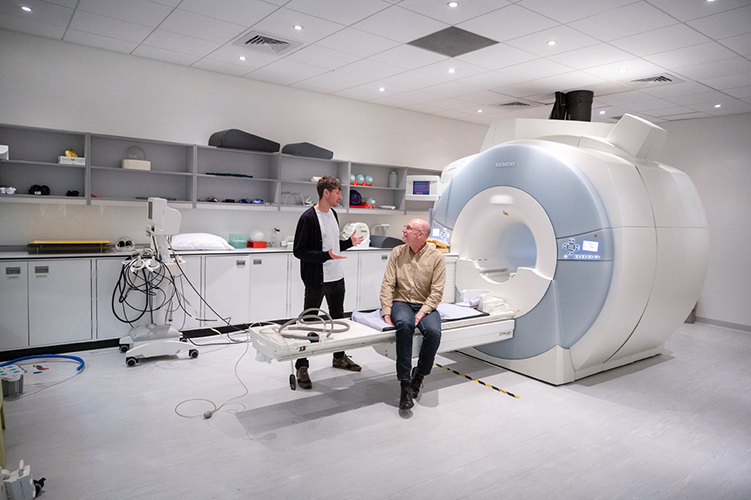 Image © Thomas Angus, Imperial College London
Image © Thomas Angus, Imperial College London
Here Dr Robin Carhart-Harris and Michael Pollan and are pictured at an MRI scanner at the centre, where brain scans can be performed to see what happens to our minds when experiencing a psychedelic trip. (there are more images from this visit in another post here)
Led by Robin, the Centre focuses on two main research themes: the use of psychedelics in mental health care; and as tools to probe the brain’s basis of consciousness.
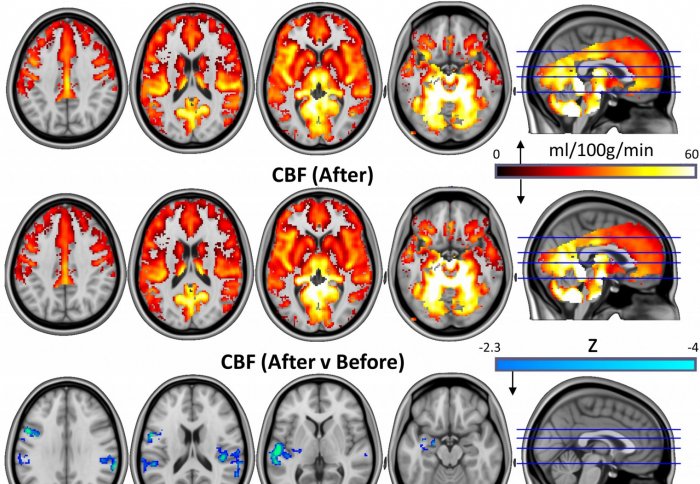 Image © Centre for Psychedelic Research, Imperial College London
Image © Centre for Psychedelic Research, Imperial College London
MRI scans show the brain ‘lighting up’ with connections during a psychedlic experience. “Functional MRI imaging revealed reduced blood flow in areas of the brain, including the amygdala, a small, almond-shaped region of the brain known to be involved in processing emotional responses, stress and fear. They also found increased stability in another brain network, previously linked to psilocybin’s immediate effects as well as to depression itself.” Read more on that first trial in 2017 here.
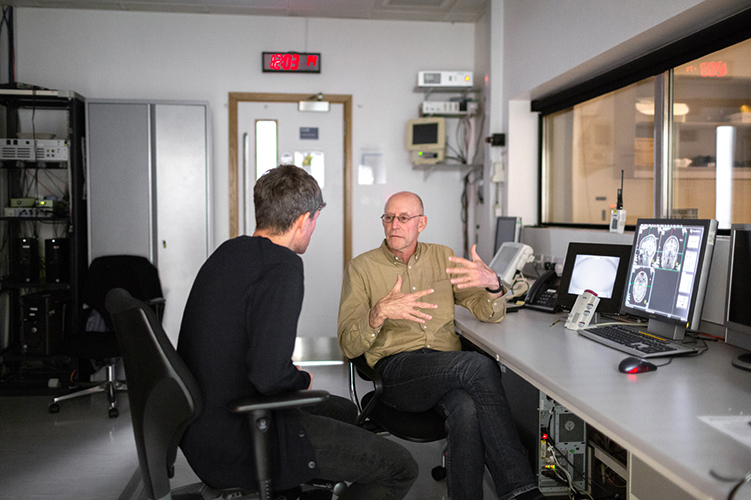 Image © Thomas Angus, Imperial College London
Image © Thomas Angus, Imperial College London
Robin and Michael discussing MRI scans in the MRI control room. “Comparison of images of patients’ brains before and one day after they received the drug treatment revealed changes in brain activity that were associated with marked and lasting reductions in depressive symptoms.” Robin Carhart-Harris
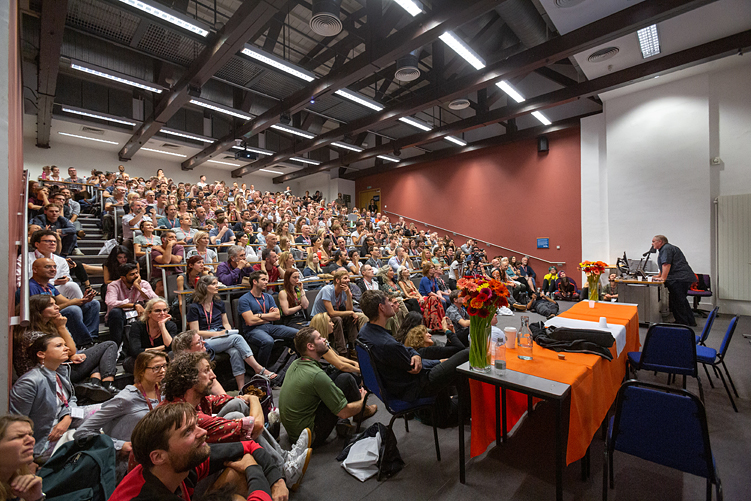 Image © Thomas Angus, Imperial College London
Image © Thomas Angus, Imperial College London
Deputy Head of Centre, Professor David Nutt addresses a packed hall at Breaking Convention (Pre-COVID-19!) describing the work of the Centre for Psychedelic Research. The trials have garnered extraordinary attention.
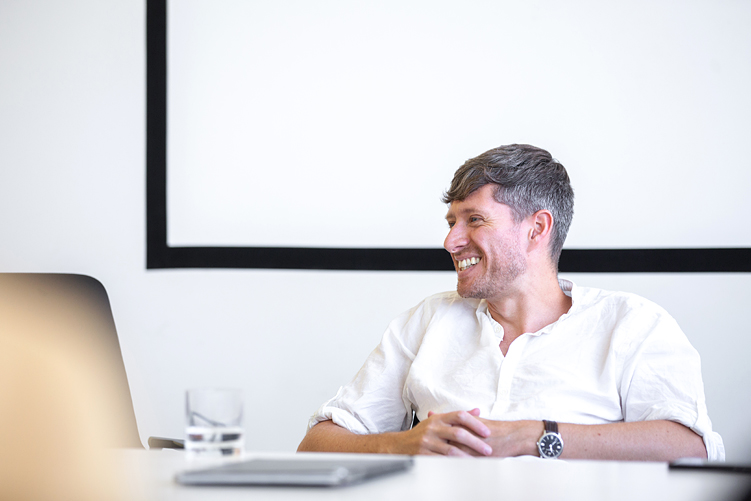 Image © Thomas Angus, Imperial College London
Image © Thomas Angus, Imperial College London
“Depression and addictions rest on reinforced patterns of brain activity, and a psychedelic will introduce a relative chaos. Patterns that have become reinforced disintegrate under the drug. I’ve used the metaphor of shaking a snowglobe. And there’s some evidence that psychedelics induce plasticity, in terms of neural connections in the brain, such that there is a window of opportunity in which connections can either be broken or reinforced. New things can be learnt at the same time that old things can be unlearnt. It induces a kind of suppleness of mind.” Robin Carhart-Harris
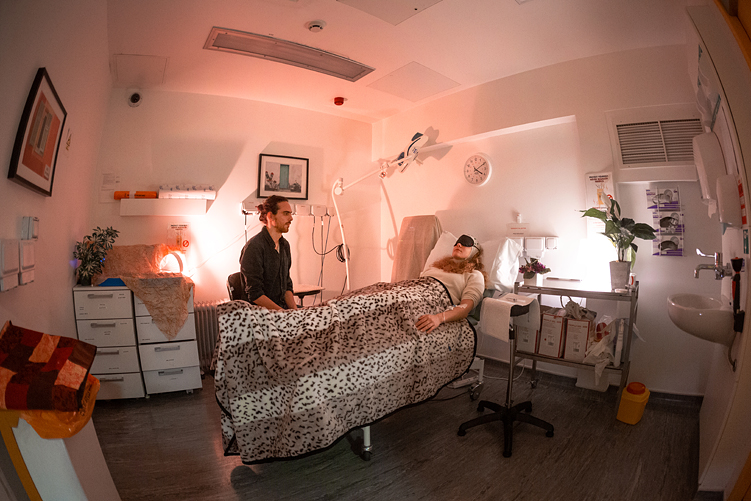 Image © Thomas Angus, Imperial College London
Image © Thomas Angus, Imperial College London
The centre does not just focus on magic mushrooms, but rather a wide spectrum of psychedelic medicines. Other pioneering work from the group includes breakthrough neuroimaging research with psilocybin, MDMA and DMT (the psychoactive compounds found in ecstasy and ayahuasca respectively). Here researcher Chris Timmerman is pictured in the DMT treatment room with a volunteer, using an eeg cap. Chris’ research focuses on the effects of DMT in the human brain.
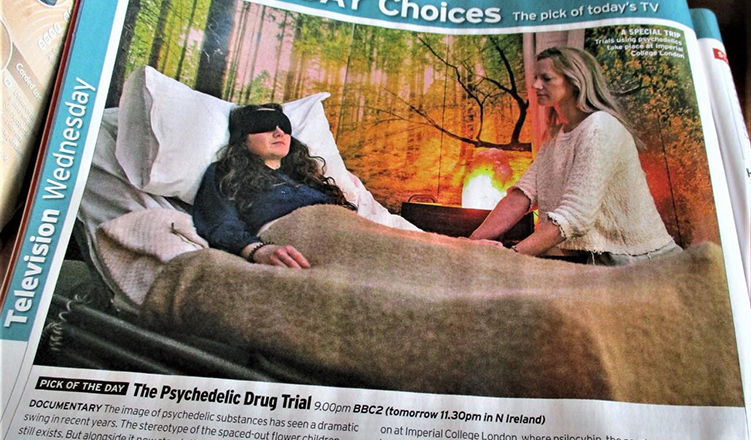 Image © Thomas Angus, Imperial College London
Image © Thomas Angus, Imperial College London
These images have been used widely across media to communicate the work of the Centre, here’s a page from the Radio Times promoting this evenings programme. (Stolen from @RCarhartHarris twitter feed, thanks Robin!)
 Image © Thomas Angus, Imperial College London
Image © Thomas Angus, Imperial College London
…and here our mushrooms pop up in the general press to illustrate the trial success. I should note that picture editors seem to really like using whacky colours all over mushroom images for psychedelic stories, whereas, in my opinion, they look magical enough as they are! Thankfully, it appears so do the Guardian who have used the image unmolested here.
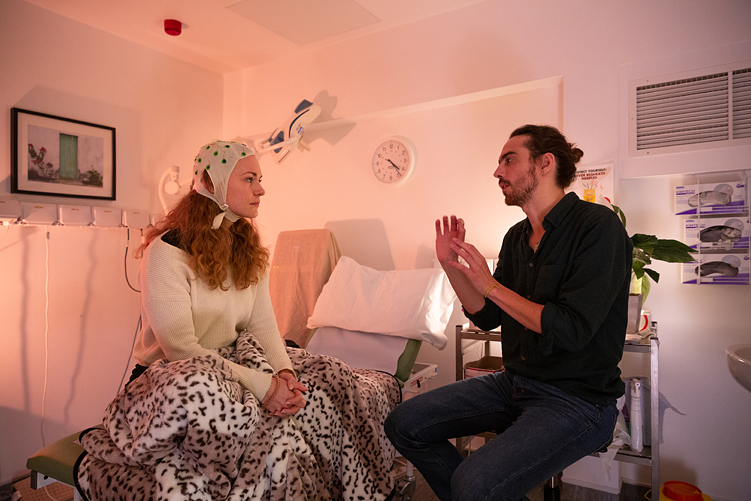 Image © Thomas Angus, Imperial College London
Image © Thomas Angus, Imperial College London
If you have an interest in supporting the research and participating in a trial at the centre, you can apply via the centre website.
The Centre for Psychedelic Research
Visit the Centre for Psychedelic Research website here.
View all of these images including the rest from each shoot on the College Asset Library:
Imperial staff and students can view all the original images featured in the post, along with more on the Imperial College London Asset Library.
Learn more about photography:
College users have free access to Linkedin Learning courses, and here’s a selection of photography courses online at Linkedin Learning (Previously Lynda.com).